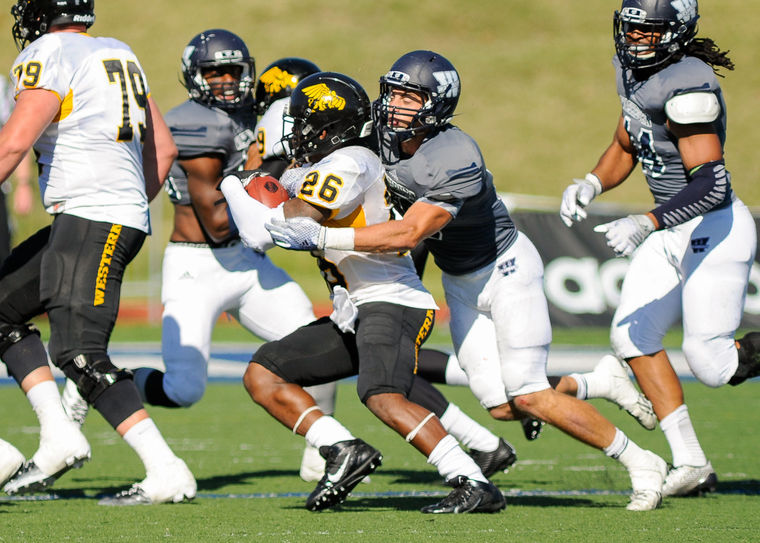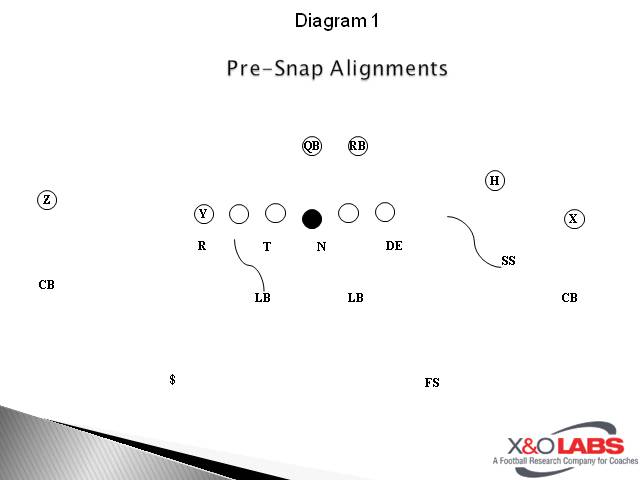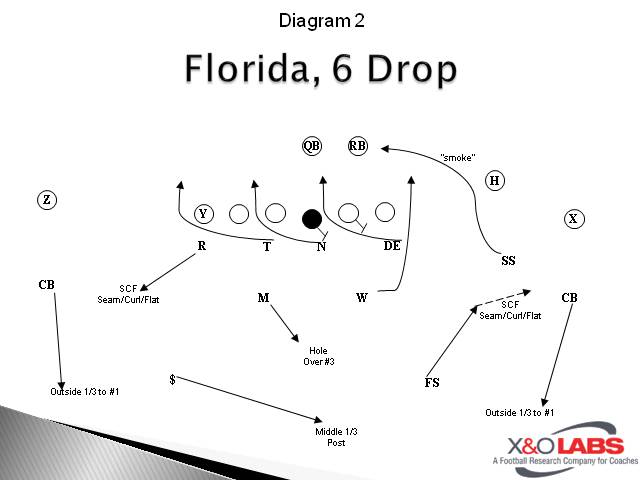By Zach Watkins
Co-Defensive Coordinator/Special Teams Coordinator/Linebackers
Washburn University (KS)
Twitter: @Zach_Watkins
Introduction:
 It is always important for a defense to mix up and disguise what they are doing. This is especially true when blitzing. If a blitz is given away early or executed too late, its effectiveness will most certainly be lost. We mix in all kinds of blitzes in our defensive package. We will bring anywhere from 4-7 guys, as well as changing up the coverages behind those blitzes. We feel that you must switch up the coverages to be effective.
It is always important for a defense to mix up and disguise what they are doing. This is especially true when blitzing. If a blitz is given away early or executed too late, its effectiveness will most certainly be lost. We mix in all kinds of blitzes in our defensive package. We will bring anywhere from 4-7 guys, as well as changing up the coverages behind those blitzes. We feel that you must switch up the coverages to be effective.
In the past few years, we have started to use more zone blitz concepts within our scheme. We have found this to be difficult for an offense to read pre-snap, effective at pressuring the QB and provides certain advantages to us in game planning.
When To Call Zone Blitzes
All downs are possible for us to run our zone blitz packages. Passing situations are obviously more conducive to having success with the blitz, but the run fits are sound for those times we don’t call it at the perfect time. 3rd and long situations (6+) work well, especially with the 1 back sets we most often see. We always want to try to create a 2 for 1 for the RB in their protection so that we have dictated our play for the offense to adjust to.
Pre Snap Alignment
We try to confuse the offense and dictate the protection by “stemming” around pre snap. This includes sugaring our 7 underneath players (DL, LB’s and strong safety (SS)). We will give the same 10x2 high shell look every snap with our free safety (FS) and stud ($), regardless of blitz or coverage (Diagram 1). Our corners can show any leverage and depth, as long as they are in position to play the zone that is called. By maintaining this two high look with the safeties, and with the underneath LBs/SS in our 4-2-5 scheme moving around, we believe it makes it difficult for the offense to diagnose what we are doing. This alignment also gives our guys confidence in their blitzes because if they have stemmed around often enough, their blitz should be disguised. 
Blitzes
Within our blitz package, we have the ability to bring anywhere from 4-7 guys and still play zone concepts behind the blitz. All of our zone blitzes are states. This helps our players to categorize the blitzes within terminology of the rest of our defense. I will detail three base zone blitzes that we use, Florida, Texas, and Kansas with the different zone coverages we play behind them, 6 Drop, 6 Rush, and Trap 2. We can also “pop” (single blitz) any player who is not a DL and play zone coverage behind it.
Below, I will detail one blitz with all the coverages, and then expand to other blitzes. For the purpose of simplicity, I’ve drawn each diagram to show the field to the right and boundary to the left. We also play man free (Cover 1) behind these blitzes, but I’ll detail the zone concepts for this article.
FLORIDA
Our main zone blitz is the traditional Fire Zone. “Florida” is used with Cover 6 Drop (3 under, 3 deep, with a DE dropping into coverage) behind it (Diagram 2). Because we run a 4-2-5 and read to the multiple WRs, we typically bring this from the field. We have some flexibility in how we can roll and adjust the coverages, and that we have some more speed coming off the edge in our SS rather than an LB. As in all zones, we will get hands on and be physical with receivers and force them over the top.

BLITZERS
Up front we call our strength to the TE, and will keep it that way no matter that blitz. This allows our front to have different looks on film within the same blitz. We will read to the multiple WR side, just like in our base scheme. We could read specifically into the boundary or towards the field if we want to bring the blitz from a certain side based on game planning. We give our DL very simple instructions. They will all “long-stick and read” (hard lateral lead into the direction they are slanting). This slant usually takes place into the boundary.








